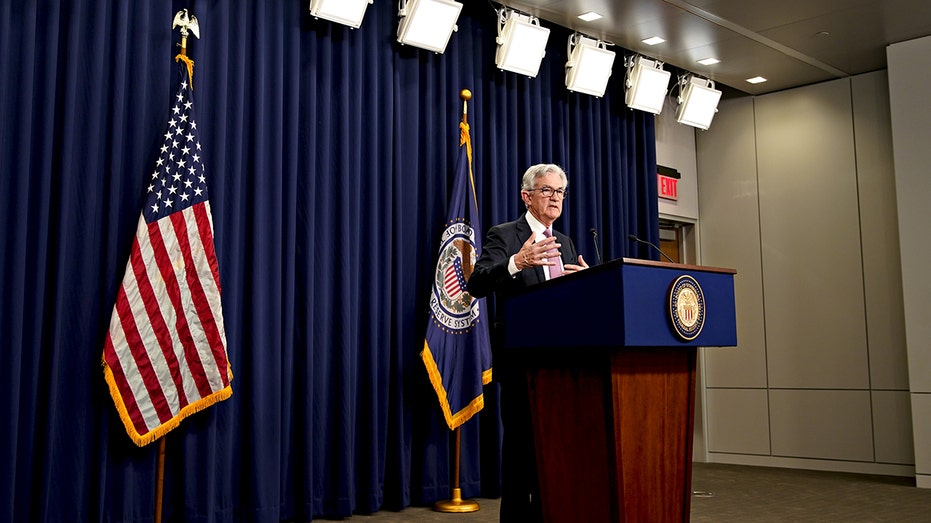November inflation report likely to show prices moderated but remain painfully high
Consumer prices expected to rise 0.2% from prior month
White House claims Americans are feeling 'a break in inflation,' Edward Lawrence reports
FOX Business Edward Lawrence reports from the White House, where he pressed the Biden administration on their 'hopeful' economic message.
The final inflation report of the year is expected to show that while high consumer prices are slowly beginning to moderate, the path to a normal inflation level could be long and arduous.
The Labor Department is set to release the highly anticipated consumer price index (CPI) report Tuesday morning, providing a fresh look at just how hot inflation ran in November.
Economists expect the gauge, which measures a basket of goods, including gasoline, health care, groceries and rent, to show that prices rose 0.2% from the previous month – down from the 0.4% reading in October. On an annual basis, inflation is projected to have climbed by 7.3%.
The report is likely to show underlying momentum in inflation as home and rent prices march higher. Core prices, which exclude the more volatile measurements of food and energy, are expected to climb 0.4% from the previous month (up from 0.3% in October) and 6.1% from the same time last year.
AMERICANS' INFLATION EXPECTATIONS EASED IN NOVEMBER TO LOWEST SINCE 2021, NY FED SURVEY SHOWS

A vendor arranges clothing for sale at a holiday market in Eastern Market in Detroit, Michigan, US, on Sunday, Dec. 11, 2022. (Photographer: Emily Elconin/Bloomberg via Getty Images / Getty Images)
While consumers have recently gotten a little relief from inflation in the form of lower gas prices, the latest CPI report will likely show that food and rent costs have skyrocketed. That is a concerning development because higher housing and food costs most directly and acutely affect household budgets.
The report will also have significant implications for the Federal Reserve, which is tightening monetary policy at the fastest rate in decades as it tries to cool consumer demand and crush out-of-control inflation.
"Whatever the forthcoming November report on inflation at the retail level looks like, it is not going to sound an all-clear on high prices," said Mark Hamrick, senior economic analyst at Bankrate. "And that means the Federal Reserve will have more work to do by raising interest rates and keeping them higher for longer. The inflation fever is breaking, but it hasn’t gone away."
Policymakers in November approved a fourth consecutive 75-basis-point rate hike, lifting the federal funds rate to a range of 3.75% to 4% – well into restrictive levels – and indicated that more increases are coming. Policymakers are widely expected to approve a seventh straight rate hike at the conclusion of their two-day meeting on Wednesday, with most traders anticipating in a 50-basis-point jump in the federal funds rate.
But with inflation remaining stubbornly high, there is a growing expectation on Wall Street that the Fed will trigger an economic downturn as it raises interest rates higher – and threatens to hold them at elevated levels for longer.
"I do continue to believe that there is a path to a soft, or a soft-ish landing," Fed Chairman Jerome Powell said last month. But acknowledged the odds of such an outcome – in which there is a slight rise in unemployment without a severe recession – is narrowing as rates climb higher.

Jerome Powell, chairman of the Federal Reserve, speaks during a news conference following a Federal Open Market Committee (FOMC) meeting in Washington, D.C., on May 4, 2022. (Photographer: Al Drago/Bloomberg via Getty Images / Getty Images)
If the November inflation data comes in hotter than expected, it could raise the odds of a steeper rate hike when the officials meet this week and a more aggressive central bank in the coming months.
CLICK HERE TO READ MORE ON FOX BUSINESS
The Fed is also watching other economic indicators, including job growth and consumer inflation expectations. In a potentially worrisome sign, job growth has been chugging along at a healthy pace, despite the central bank's efforts to cool the labor market.





















